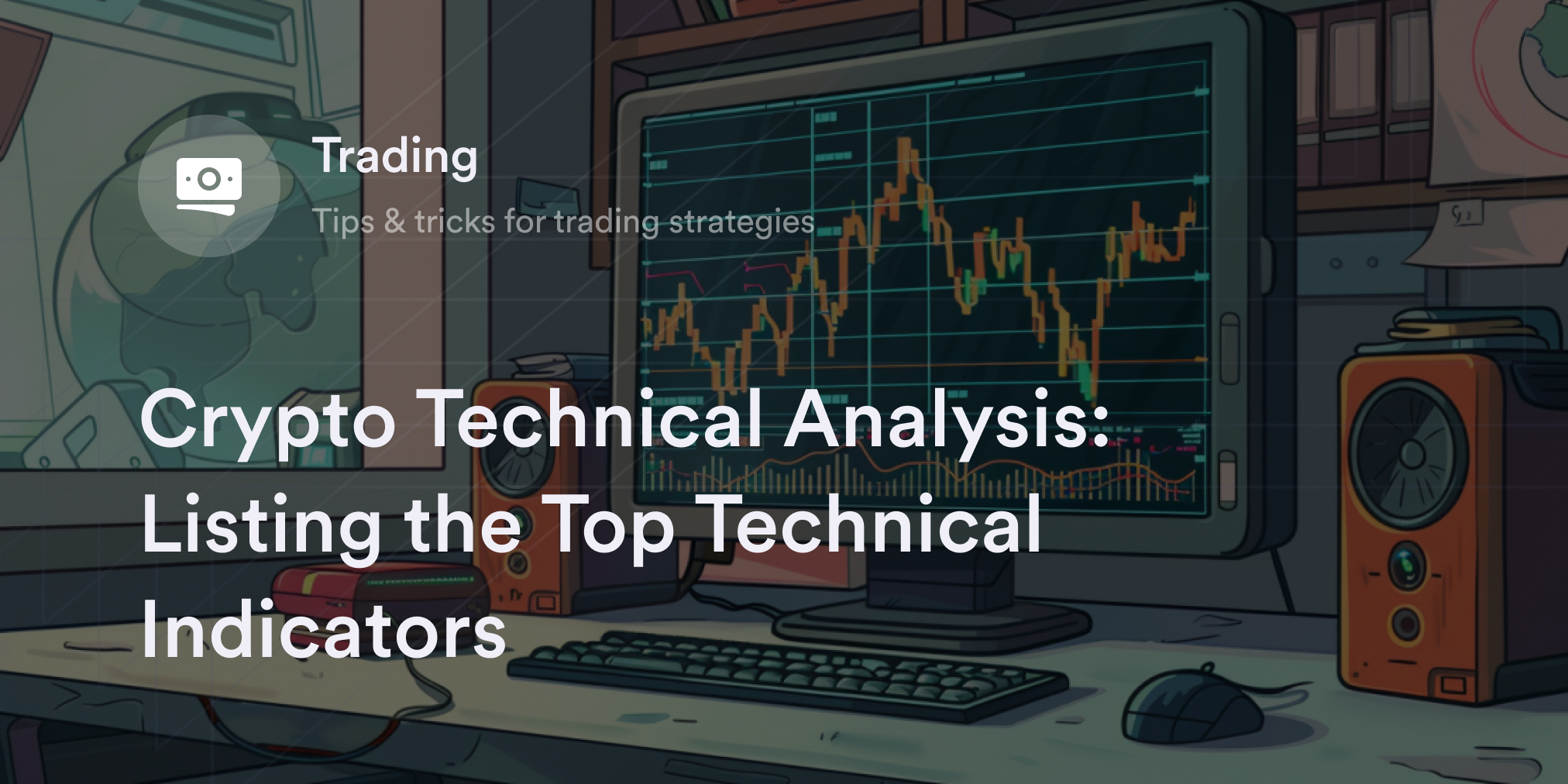


It's no secret crypto traders with large positions (aka whales) make calculated moves in the cryptocurrency market. Every transaction on blockchains like Bitcoin (BTC) is viewable, so traders spend a lot of time speculating on the latest big moves in Web3. Crypto news sites often publish juicy headlines when celebrity wallets shift coins, and crypto social media goes into a frenzy when "Whale Alert" drops a new tweet. While whale activity may not seem so critical when studying trading patterns, there are theories that whales coordinate their efforts to influence the market’s direction.
In fact, there's an entire cryptocurrency price pattern called the Wyckoff method, which some traders believe whales use to trigger sizable price shakeups and manipulate trader psychology.
So how does this masterful crypto mind game work, and how can crypto traders use it to their advantage? Let’s discover more about the Wyckoff method playbook, including its phases and laws.
The Wyckoff trading method explained
The Wyckoff trading method is a diagram that attempts to identify common patterns of price manipulation for tradable assets like cryptocurrencies. This theory gets its name from U.S.-based financial writer and investor Richard Wyckoff, who elaborated his ideas in the early 20th century.
Wyckoff developed the concept of the composite man, which means a hypothetical all-powerful trader who analyzes and manipulates asset prices behind the scenes to the disadvantage of smaller retail traders. In this sense, the composite man represents the interests and strategies of large institutions and whales, and it highlights their perspective on price dynamics and market psychology.
The Wyckoff trading strategy relies heavily on technical chart patterns and volume bars to illustrate how the composite man typically reacts to market fluctuations and manipulates prices.
The major phases in the Wyckoff trading schematic are accumulation and distribution zones, each with smaller phases explaining the expected emotions and movements at different price points. During accumulation periods, the composite man strives to buy (or accumulate) as much of the asset at a discounted price by driving retail traders out of their positions. In contrast, distribution stages happen after a crypto asset’s price rises, and the composite man begins offloading their stash while encouraging retail traders to buy at higher prices.
3 “laws” of the Wyckoff method
The “law” of supply and demand: This determines the price direction. If demand is greater than supply, prices will rise; if supply is greater than demand, prices will fall.
The “law” of cause and effect: This helps understand potential price movements through periods of accumulation (cause) and the subsequent uptrend (effect) or distribution (cause) and the subsequent downtrend (effect).
The “law” of effort versus result: This analyzes price movements (result) in conjunction with volume (effort) to assess a trend’s sustainability.
Wyckoff accumulation and distribution phases
Within the overarching accumulation and distribution stages, the Wyckoff method contains smaller-lettered phases representing significant milestones in a crypto asset's price action. While the phases in the Wyckoff theory don't always fit picture-perfect with reality, they're essential to understanding the composite man's mindset and the most likely scenarios for future price action.
Wyckoff accumulation phases
Phase A
The Wyckoff accumulation stage starts in a steep downtrend that often hovers at a preliminary support zone before falling further to the ultimate low point (aka the selling climax). Once selling pressure mounts and a cryptocurrency’s price reaches low levels, the composite man steps in to arrest the downtrend and trigger an automatic rally before another correction on lighter trading volume.
A digital asset’s price doesn't go further than the selling climax during this second sell-off; instead, it reaches a slightly higher level known as the secondary test.
Phase B
Unlike phase A's volatile swings, phase B's key characteristics are reduced volume and sideways price action.
During this phase, prices stay range-bound between the automatic rally's high and the secondary test levels. Bounces outside these price extremes happen, but they typically don't last long and are used by the composite man to take profits or build a more significant position.
Phase C
During phase C, there's a sudden and sharp downtrend to prices below the selling climax of the first phase with a quick spring upward and one or two tests at higher lows.
For the composite man, in particular, this phase symbolizes the final shakeout of other traders and the last opportunity to buy a digital asset at the lowest possible price.
Phase D
Prices and volumes start to pick up in phase D, which is often likened to a price rebound following the prior low points. Some corrections exist along the way, but the overall trajectory of phase D is up until prices hit a local high called the sign of strength before falling briefly to a last point of support.
Phase E
Think of phase E as the exit from accumulation into distribution. In this final phase, prices bounce hard off the support levels established in phase D and enter a full-blown rally mode with above-average buying volume.
Wyckoff distribution phases
Phase A
Coming out of accumulation, prices surge during the first phase of distribution, with demand outpacing supply. The increased frenzy in the crypto market encourages more inexperienced traders to buy crypto assets at the buying climax, at which point the composite man offloads positions in an automatic reaction to take profits.
Before moving out of phase A, prices tend to rebound to a lower high than the secondary test, which helps traders identify a new resistance zone.
Phase B
Like phase B in the accumulation stage, phase B in distribution is characterized by a tight trading range with a lower volume than the previous stage. Sometimes, there are dips below the automatic reaction price and above the secondary test, but prices tend to stay within a well-defined range during this period.
Phase C
Here, there's a sharp upthrust in price activity to a new price high, which serves as the final chance for the composite man to sell assets at their peak and entice inexperienced traders to buy at inflated levels. There's often aggressive selling activity from institutions as the excitement from phase C winds down.
Phase D
Prices fall back into the range defined by phase B in phase D, often hitting the previously established support lines multiple times. These bounces from support give some traders hope of a rebound, but the greater selling pressure outpaces demand and eventually leads to a breakdown.
Phase E
Just as phase E in accumulation breaks the upper resistance levels, the last phase of distribution cuts through lower support prices and continues moving down. Even the most optimistic crypto traders admit the party is over as the distribution stage draws to a close.
How to use the Wyckoff method in crypto trading
Traders who study the Wyckoff method strive to put themselves in the composite man’s position and increase the odds they're on the profitable side of a trade.
In addition to using price patterns and technical indicators to predict the current phase, traders closely monitor trading volume, market sentiment, and suspiciously large transfers between crypto wallets for further evidence on timing their moves. After traders determine where they are in a Wyckoff accumulation or distribution stage, they usually go long in support zones and sell or short the market at key resistance levels.
The Wyckoff method also provides traders with clear price levels to set precise buy and sell orders and define risk tolerance when entering positions. So even if a Wyckoff phase doesn't turn out as planned, traders have the tools to determine their maximum loss potential with sell-stop market orders.
Precautions when trading the Wyckoff method
The Wyckoff schema for accumulation and distribution has scientific precision, but there are no guarantees this framework will play out exactly as expected. As with other technical analysis patterns and theories, there's always the possibility for false breakouts, trend reversals, or unexpected news (aka black swan events).
Even if crypto traders believe they've spotted a Wyckoff pattern, there’s no certainty that it’ll materialize in a textbook fashion, so defining risk before entering a trading position is essential.
Traders often take advantage of automatic buy or sell orders such as take-profits or stop-losses to predefine their max loss before entering positions within a suspected Wyckoff pattern. Most traders also find it helpful to use the Wyckoff method as part of a comprehensive market analysis rather than their sole methodology.
Combining the Wyckoff template with other technical indicators and fundamental metrics gives traders a broader overview of market conditions to make more informed decisions on the optimal way to enter and exit cryptocurrencies.
Eligible traders can trade perps during any phase on dYdX
Whether eligible traders favor the Wyckoff trading strategy or other technical and fundamental indicators, dYdX is the place to swap Bitcoin and altcoin perpetuals. Since dYdX's launch in 2017, it has become the go-to platform for eligible DeFi traders interested in an intermediary-free perpetuals exchange. Discover the latest tools, features, and upgrades on dYdX's official blog to see what makes us the dominant name in DeFi derivatives. Plus, check out a wealth of beginner-friendly guides on all things crypto on dYdX Academy, and eligible traders can start trading on dYdX today.
Disclosures
The content of this article (the “Article”) is provided for general informational purposes only. Reference to any specific strategy, technique, product, service, or entity does not constitute an endorsement or recommendation by dYdX Trading Inc., or any affiliate, agent, or representative thereof (“dYdX”). Use of strategies, techniques, products or services referenced in this Article may involve material risks, including the risk of financial losses arising from the volatility, operational loss, or nonconsensual liquidation of digital assets. The content of this Article does not constitute, and should not be considered, construed, or relied upon as, financial advice, legal advice, tax advice, investment advice, or advice of any other nature; and the content of this Article is not an offer, solicitation or call to action to make any investment, or purchase any crypto asset, of any kind. dYdX makes no representation, assurance or guarantee as to the accuracy, completeness, timeliness, suitability, or validity of any information in this Article or any third-party website that may be linked to it. You are solely responsible for conducting independent research, performing due diligence, and/or seeking advice from a professional advisor prior to taking any financial, tax, legal, or investment action.
You may only use the dYdX Services in compliance with the dYdX Terms of Use available here, including the geographic restrictions therein.
Any applicable sponsorship in connection with this Article will be disclosed, and any reference to a sponsor in this Article is for disclosure purposes, or informational in nature, and in any event is not a call to action to make an investment, acquire a service or product, or purchase crypto assets. This Article does not offer the purchase or sale of any financial instruments or related services.
By accessing this Article and taking any action in connection with the information contained in this Article, you agree that dYdX is not responsible, directly or indirectly, for any errors, omissions, or delays related to this Article, or any damage, injury, or loss incurred in connection with use of or reliance on the content of this Article, including any specific strategy, technique, product, service, or entity that may be referenced in the Article.







